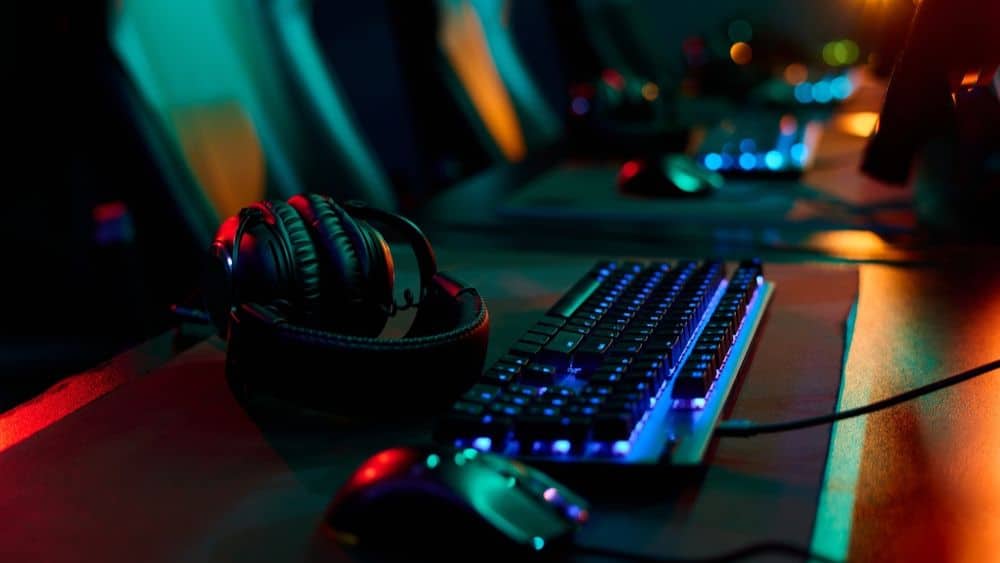
Esports has transformed from a niche community into a billion-dollar global industry, and with that growth comes a surge in broadcasting careers. Behind every League of Legends World Championship, Call of Duty Major, or Valorant International, there’s a broadcast team bringing the action to millions of fans worldwide. From shoutcasters and hosts to technical directors and observers, esports broadcasting jobs have become some of the most dynamic, fast-paced, and sought-after roles in the sports and media industry.
Whether you dream of being the voice behind the plays, producing highlight reels, or managing the technical flow of a live tournament, the field of esports broadcasting offers a pathway to merge passion for gaming with a rewarding career. This guide breaks down the roles, skills, salaries, and steps you need to launch into the world of competitive gaming media.
What Esports Broadcasting Includes (2025 Career Roles)
On-Air Roles – Play-by-Play, Color, Host, Reporter
- Play-by-Play (Shoutcaster): The energetic voice narrating live action.
- Color Commentator (Analyst): Provides context and insights.
- Host or Desk Anchor: Guides discussions and flow.
- Reporter or Interviewer: Conducts live player interviews.
Behind the Scenes – Observer, Replay, Technical Director, Audio, Graphics
- In-Game Observer: Controls the in-game camera.
- Replay Operator: Cues instant replays and highlight reels.
- Technical Director (TD): Oversees live broadcast transitions.
- Audio Engineer: Balances audio from multiple sources.
- Graphics & Production Crew: Designs overlays and scoreboards.
Skills & Tools Needed (Voice, OBS, vMix, Replay Ops)
Core Communication and Storytelling
Strong vocal control, pacing, and ability to adapt quickly.
Technical and Software Essentials
- OBS Studio & vMix
- NDI & Networking Tools
- Replay Systems (EVS/LiveSplit)
- Comms Systems (Clear-Com/Discord)
Gear and Setup

From entry-level mics and webcams to full-scale studio equipment, gear is one of the most important investments an aspiring esports broadcaster can make. Your setup directly impacts audio clarity, video quality, and overall professionalism, which hiring managers and tournament organizers notice immediately.
At the starter level, focus on clear audio above all else. A reliable dynamic or condenser microphone with a pop filter will go much further than a flashy webcam. Combine it with closed-back headphones to monitor your sound and reduce echo. Adding a basic USB interface improves input quality.
As you move toward intermediate setups, consider upgrading to an HD or 1080p camera, consistent two-point lighting, and a broadcast arm for your mic. At this stage, a Stream Deck or similar controller can improve scene switching in OBS or vMix.
Professional setups used by high-level casters and production talent often include DSLR or mirrorless cameras connected via capture cards, three-point lighting with softboxes or LEDs, and studio-grade audio chains (XLR microphones, mixers, compressors). Dual-PC or dedicated encoder setups allow for smoother broadcasting at higher resolutions without frame drops.
No matter your budget, prioritize stability: a wired internet connection, surge protection, and a quiet space. Consistency and reliability are as important as quality; organizers want to trust that you can deliver without technical disruptions.
How to Start a Career in Esports Broadcasting (Step-by-Step Playbook)

Build Your Foundation (2–4 Weeks)
- Pick 1–2 primary game titles you know well.
- Study pro broadcasts: pacing, tone, transitions.
- Daily drills: record yourself reading patch notes.
- Create a style guide: on-air name, tone, and habits to avoid.
- Warm up daily: lip trills, humming, and tongue twisters to improve diction
- Create a glossary for each game (abilities, maps, slang) and reference it live
- Shadow-call VODs at 1.25x speed to train pacing under pressure
- Log takeaways in a running doc: what you nailed, what to fix next time
- Hydration & mic distance discipline (3–5 inches off-axis) for consistent tone
Build a Demo Reel That Books Gigs (1–2 Weeks)
- Length: 60–90s reel + links to 2 VODs.
- Structure: intro, hype clip, analysis, host clip, outro.
- Ensure clean audio/visual quality.
- Label roles, clips, and contributions clearly.
- Target loudness: keep spoken voice around a consistent level and avoid clipping; aim for peaks near –3dB
- Use clean lower-thirds: name, role, and a short descriptor on each clip
- Show range: one hype moment, one calm, one high-info desk handoff
- Close with a CTA card: portfolio URL, email, Discord, availability window
- Host composure matters: include at least one segment intro or sponsor read
Get Reps (Fast) With Real Shows
- Volunteer for collegiate and community tournaments.
- Stream your own weekly content.
- Practice observer/replay by spectating custom lobbies.
- Offer to cover off-hours or short-notice matches to build trust fast
- Rotate roles weekly (PBP/Color/Host/Observer) to discover your strongest lane
- Package deliverables: basic overlays, countdown scenes, and music beds (license safe)
- Record every show locally as backup; organizers love dependable ops
Portfolio That Converts
- Homepage: quick value + reel.
- Clips page: labeled samples.
- Credits page: events, orgs, dates.
- About/Contact: short bio, email, links.
- Above the fold: 60–90s reel + one-sentence value prop
- Add a ‘Booking’ button with a calendar link for quick scheduling
- Include testimonials or brief quotes from TOs and producers
- Provide a simple downloadable resume and an equipment list (‘Kit’)
Outreach & Networking (Templates Included)
- Contact TOs, production houses, and collegiate programs weekly.
- Keep outreach emails short with reel + VODs.
- Follow up after 5–7 days.
- Maintain consistent handles across platforms.
- Keep first contact <120 words; attach reel + 2 VOD links + availability
- Track outreach in a spreadsheet: contact, date, response, next steps
- Align time zones and state your tech readiness (mic, camera, OBS/vMix)
- Follow up once after 5–7 days with one new clip; avoid spamming
Where to Find Day-One Opportunities
- College esports offices & clubs.
- Community circuits & Discords.
- Local LAN centers.
- Job boards (including JobsInSports).
- University esports departments and broadcast labs (semester leagues)
- Community organizers on Discord/Challengermode/Faceit forums
- Local LAN centers: propose a monthly ‘community night’ with commentary
- Charity tournaments: great for VODs, testimonials, and networking
Auditions & Live Tests (What to Expect)
- Cold read PBP over unseen footage.
- Desk segment test.
- Observer pathing practice.
- Tech checks for mic/comms.
- For cold reads: prioritize clarity and play naming over clever metaphors
- Desk tests: timebox intros to 10–12s; tee your analyst, then get out clean
- Observer tests: plan pathing—openers, mid-round pivots, post-round reactions
- Tech checklist: gain staging, noise gate check, comms etiquette, backup record
Starter-to-Pro Gear Tiers
- Starter (~$150–$300): mic, webcam, light.
- Intermediate (~$400–$800): better mic, 1080p cam, Stream Deck.
- Pro: 4K cam, studio lighting, dual PC setup.
- Starter: dynamic USB mic (with pop filter), 1080p webcam, soft key light
- Intermediate: XLR mic + interface, 1080p60 cam, two-point lighting, arm
- Pro: mirrorless/DSLR + capture, three-point lights, treated room, dual PC or hardware encoder
Rates, Invoices & Basics (Freelance)
- Day rates with hour caps.
- Charge for prep/tech.
- Invoice with net terms + rights/usage agreements.
- Quote a day rate with hours cap + overtime terms; clarify travel/per diem
- Add prep/rehearsal/tech-day fees when applicable
- Invoices: include W‑9, net terms (e.g., Net 15/30), PO/Job ID, payment methods
- Spell out clip usage rights so you can feature segments in your reel
Common Mistakes to Avoid
- Over-hype without clarity.
- No labels on clips.
- Poor audio quality.
- Broken reel links.
- Inconsistent usernames.
- Over-mixing game audio above voice; keep voice intelligible at all times
- No backup: always local-record and keep duplicate asset folders
- Unclear file naming: use consistent slugs for VODs and clips
- Neglecting posture and breath, fatigue hurts delivery by hour two
Inline CTA: Ready to put this playbook to work? Browse current esports broadcasting & production openings on JobsInSports.
H2: Esports Broadcasting Salaries & Job Outlook
- Play-by-Play/Color Casters: $40,000–$80,000+ annually.
- Observers & Replay Operators: $15–$30/hour; $50,000+ annually.
- Technical Directors & Producers: $50,000–$90,000.
- Hosts/Analysts: $25,000 entry-level to six figures.
The job outlook is strong through 2030 as esports expands globally.
Education & Certifications: Do You Need a Degree?
Degrees help, but aren’t required. Colleges offer esports-specific programs. Demo reels and certifications often weigh more.
Where to Find Esports Broadcasting Jobs
Esports broadcasting is a legitimate career path. With the right skills, portfolio, and network, you can join the team that delivers gaming to millions.
Explore esports broadcasting careers now on JobsInSports.com.
FAQs
How do I become an esports caster with no experience? +
Stream, volunteer, and build a demo reel.
What’s the difference between play-by-play and color commentary? +
Play-by-play narrates, color explains strategy.
How much do esports broadcast roles pay? +
$100–$300 per event; $50,000+ annually for pros.
What’s an in-game observer, and how do I learn it? +
Observers control cameras. Practice and apply for tournaments.





